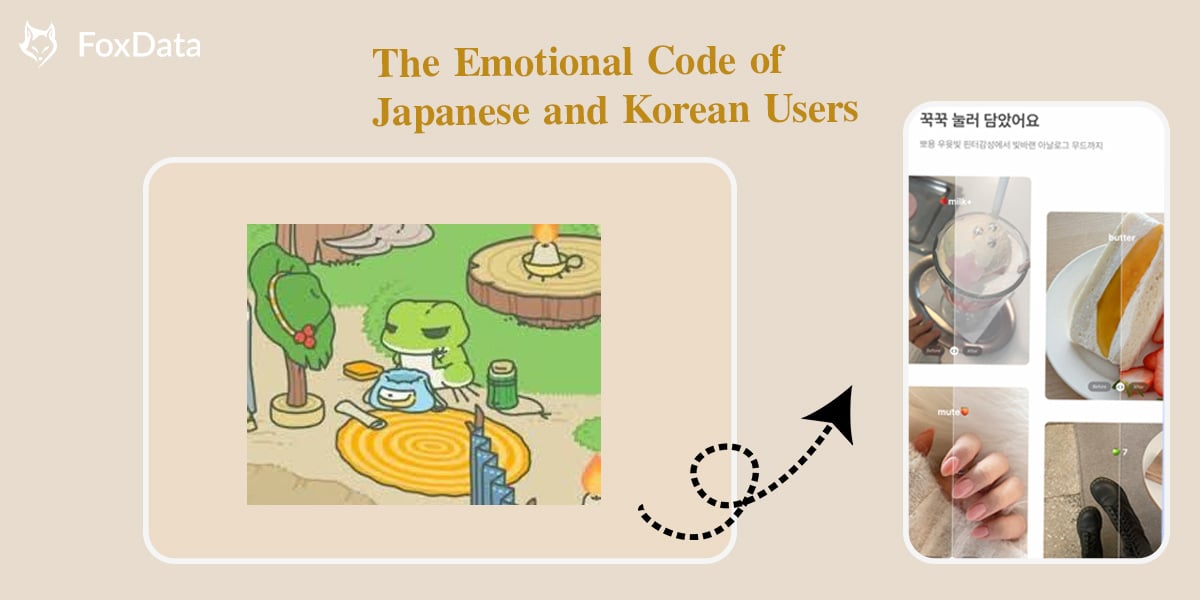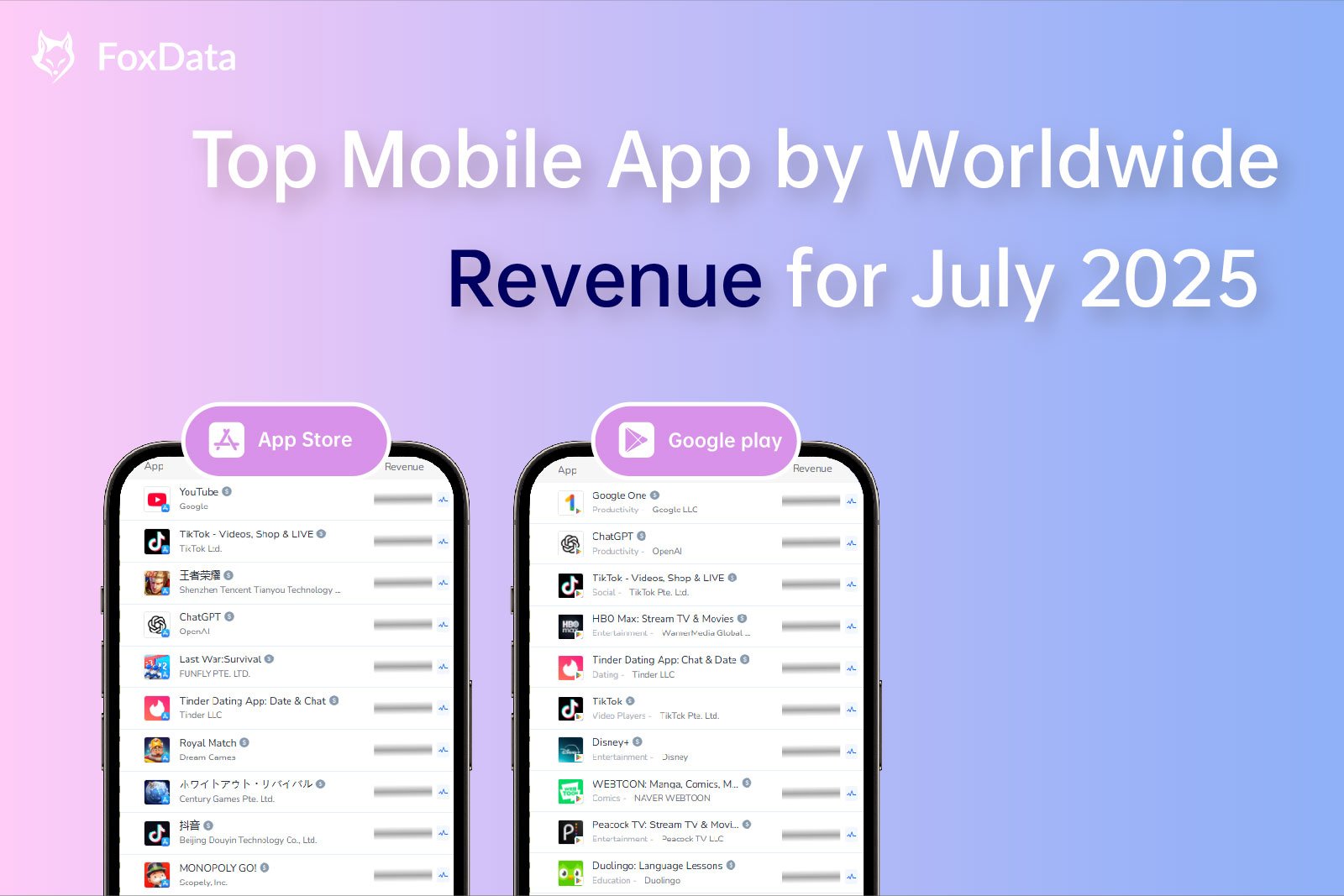
In 2018, the viral success of Travel Frog in Japan surprised many. With virtually no complex gameplay, the simple act of preparing a small frog for its journeys — and then quietly waiting for postcards from its trips — kept millions of users emotionally invested. A few years later, in Korea, young people went crazy for another app: BerryFilm, a photo application known for its creamy, low-saturation filters that could instantly transform TikTok and Instagram feeds into “millennial-style retro scenes.”
At first glance, these two apps seem to have nothing in common. But in fact, they reveal the same truth: in Japan and Korea, atmosphere often matters more than functionality, and users are willing to pay for a feeling.
The Emotional Consumption Code of Japanese and Korean Users
Japan: The Culture of Subtle Healing
One keyword defines Japanese consumer habits — iyashi (healing). Whether it’s minimalist journaling apps, digital diaries, or slow-paced idle games, Japanese users are willing to pay for experiences that provide emotional companionship and a sense of comfort.
In Japan’s high-pressure social environment, these apps function as psychological havens. Unlike Western markets, which emphasize efficiency and functionality, Japanese users convert to long-term paid subscriptions for apps that offer aesthetic beauty, refined typography, subtle interface details, and—above all—emotional value.
Data also highlights this trend: Japanese users demonstrate significantly higher spending power on Korea’s Weverse app than their counterparts in China or the United States.
Korea: Fashion-Forward and Trend-Driven Culture
Unlike Japan’s focus on “healing,” Korean users place greater emphasis on chasing trends and gaining social resonance. This is directly reflected in the types of popular apps in the market: filter-based camera apps, beauty-enhancement tools, fan interaction platforms, and short-form video apps.
Korean users often flock to an app because of a K-pop idol endorsement or the sudden popularity of a “viral filter.” As a result, photography and aesthetics-oriented apps frequently dominate the top of the Google Play charts.
This dynamic reflects Korea’s deeply ingrained trend effect and community effect. Users are not simply seeking a personal aesthetic experience, but rather using apps to share with friends, participate in trending topics on social media, and express their identity within groups. In other words, Koreans pay for “atmosphere” not merely for beauty, but for belonging and recognition.
👉 Comparing the two markets, we see a clear divergence:
- Japan: Users pay for “a private space of calm,” emphasizing details and long-term emotional healing.
- Korea: Users pay for “a shared atmosphere,” driven by trends, community, and instant resonance.
The Common Traits of Successful Atmosphere Apps
Although Japanese and Korean users are motivated by different factors, hit “atmosphere-driven apps” typically share a set of common characteristics:
- Strong Aesthetic Appeal: Visuals, animations, and color palettes that capture users at first glance.
- Simplified, Lightweight Experiences: Interfaces that favor relaxation and immersion over efficiency.
- Emotional Value Over Functional Utility: Apps sell a feeling, not just problem-solving.
- Implicit Social or Companion Logic: Either sharable for social visibility, or designed to create long-term emotional bonds.
- Gentle Monetization Models: In-app subscriptions or upgrades framed as “lifestyle spending,” rather than aggressive sales tactics.
Case Study
Travel Frog in Japan
When Travel Frog went viral in 2017, it was quickly dubbed Japan’s quintessential “Buddhist-style idle game.” The gameplay was almost non-existent: players simply packed items for their frog’s journey, and then patiently waited for it to send postcards home.
FoxData Insights:
- The success of Travel Frog lies in how it fulfilled Japanese users’ emotional needs for healing, companionship, and patient anticipation. In a fast-paced society, it offered a small but essential space to slow down.
- The game fostered a delicate anthropomorphic bond: when the frog failed to return home, players would “miss” it; when it finally sent a postcard, they felt “healed.”
- From a business perspective, Travel Frog never relied on heavy monetization or aggressive in-app purchases. Instead, it thrived by creating a cultural atmosphere that encouraged sustainable engagement and light social buzz, ultimately making players pay for emotional value rather than utility.
Korean Case: BerryFilm
BerryFilm is a niche but highly popular photo app that simulates the look of analog film cameras, offering distinct color filters and retro-style effects. Unlike mainstream beauty-focused camera apps, BerryFilm defines itself by one key concept: “atmospheric visual quality.” Its low-saturation, creamy tones have proven highly appealing to Gen Z users in Korea.
- BerryFilm’s success is deeply tied to the Korean market context, where users seek instant gratification through aesthetic style combined with social sharing.
- For young people, using the app is not just about taking beautiful photos, but about curating a “lifestyle atmosphere” on Instagram or TikTok — a way to capture attention and gain social validation.
- The app illustrates how Korean users are willing to pay for cultural resonance and trend participation. Its filters act as a form of self-expression and identity labeling, helping users differentiate themselves while joining a community aesthetic.
Implications for Global Developers
In Japan: Design for Slow, Long-Term CompanionshipThe key is not complex gameplay or functions, but subtle details that provide users emotional comfort in moments of solitude or stress.Product strategies that emphasize “healing,” “minimalism,” and long-term subscription models tend to resonate.In Korea: Capture Social Atmosphere and Trend MomentumVisual impact and trend alignment — especially with K-pop and fashion — can quickly trigger explosive adoption.Success depends on rapid chart momentum and viral topics, while monetization strategies lean toward short-term spikes supported by filter packs or subscription upgrades.
Shared Truth: Atmosphere as a Core DemandThe core insight is that “atmosphere is not optional but a necessity.”Leveraging data tools like FoxData to track downloads, retention, and subscription conversion rates by market allows developers to fine-tune growth strategies to the cultural context.
Conclusion
Japan and Korea provide striking examples of how, in today’s global app market, when functionality moves to the background, emotions and atmosphere rise as primary value propositions.
- In Japan, users are willing to pay for “a small frog’s journey,” because it represents healing and companionship.
- In Korea, users are willing to pay for “a filter’s mood,” because it represents identity and community recognition.
Understanding this emotional code reveals a powerful truth: atmosphere itself is a hard demand. Developers who can decode cultural differences in emotional logic will be the ones to stand out in the next wave of global growth.
Whether analyzing download trends across different countries or evaluating user retention and revenue structures, FoxData offers a one-stop overseas analysis tool covering both market-wide metrics and detailed user indicators. The download rankings, retention curves, and revenue data referenced in this article are sourced from FoxData's real-time data dashboard.
📊 Visit the FoxData official website to explore more dimensional analyses and develop precise global growth strategies for your products.
📚 Recommended reading:
All content, layout and frame code of all FoxData blog sections belong to the original content and technical team, all reproduction and references need to indicate the source and link in the obvious position, otherwise legal responsibility will be pursued.
 Keywords Research
Keywords Research  Reviews Management
Reviews Management  User Activity Monitoring
User Activity Monitoring  User Retention Analytics
User Retention Analytics  Global Market Research Top Charts
Global Market Research Top Charts  Trending Apps Bidding Keyword Analysis Ad Creatives Analysis AI App Marketing
Trending Apps Bidding Keyword Analysis Ad Creatives Analysis AI App Marketing  Keyword Tools Rating & Reviews Tools App Marketing Research Store Insights Est. App Downloads Est. App Revenue App Data Analysis
Keyword Tools Rating & Reviews Tools App Marketing Research Store Insights Est. App Downloads Est. App Revenue App Data Analysis 







